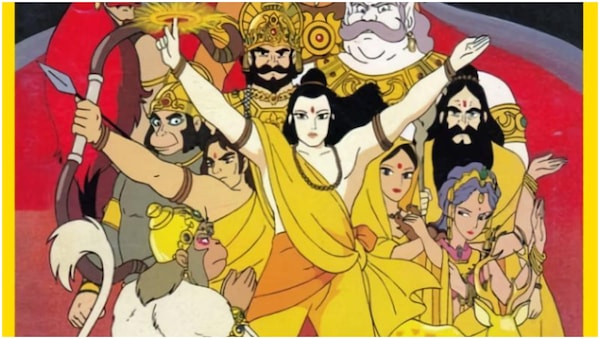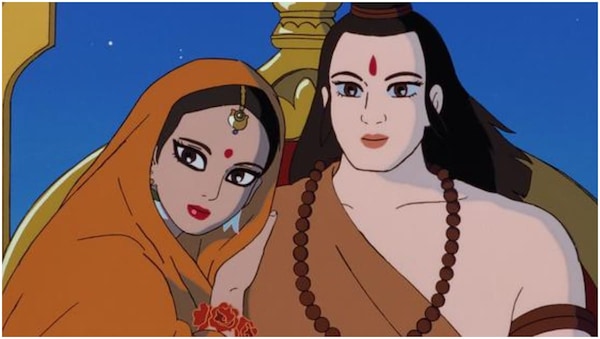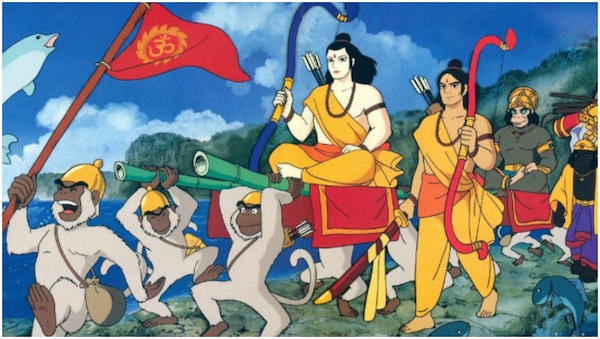Revisiting Ramayana – The Legend Of Prince Rama; a token of love from Japan that taught us to respect stories and their cultural impact
Ramayana: The Legend Of Prince Rama was released in 1993 in Japan and two years later in India.

Last Updated: 05.11 PM, Jan 19, 2024
The year 2024 has pushed us into interesting times right in the first month. You could be in favour of it or not, but the cultural impact of having the Ram Mandir being built and inaugurated next week is massive. Not just the high priests of the religion but cinema has been touched by it, and pictures of several actors being invited have been making their way to the internet almost every day. Some bigwig is getting invited as you read this. But even in the reel world, the significance of Ramayan is big. So as we move towards the consecration ceremony, let’s revisit one of the gems - Ramayana: The Legend Of Prince Rama.
A Japanese filmmaker travelled to India in 1985 to make a documentary on the Ramayan relics found in Ayodhya (the birthplace of Lord Ram, according to scriptures). He was so engrossed in the subject that he invested a decade of his life in researching it on around 60 trips to India and joined forces with Ram Mohan (the father of Indian animation). Over 450 artists created a movie that would be labelled as one of the best films ever made on the mythological tale. Yugo Sako proved that cinema transcends borders in more ways than one. And yes, it didn’t get recognition when it was released in India in 1997 (it was released in Japan in 1995). And this shocks us, too.
For a film made at a whopping budget of $6.7 million, exclusive of the $13 million at the time it was made, Ramayana: The Legend Of Prince Rama was a remarkable movie. The significance of Yugo Sako’s work is so strong that all of us, the 90s kids, have seen the movie regardless of knowing the story behind its making. It was the Ramayana for us even before any live-action retelling came into existence. Most of us learned about the epic tale from a man who was also learning about it in the process of making this movie. And we aren’t talking about kids of one clan; we are including a diverse set of kids with Cartoon Network on TV and no idea of what religion means.

Why did Yugo Sako’s Ramayana: The Legend Of Prince Rama talk to all of us regardless of our religion and race? The answer is rooted in his observation of his story, which Ram Mohan’s wife, Sheila Rao, once told Scroll. She revealed how, for Yugo, the Ramayana was an epic story that was about deities, magic, potions, lords, gods, kings, and a forest that was magnificent. So here is a man like a blank canvas looking at a world with no pre-taught conditioning.
For him, this was a story, and he was the filmmaker who had to bring it alive without taking any sides. The respect with which it comes alive on TV, without the need to caricature the bad man and make him look a certain way that he resembles a man from the other community. You know which film I am talking about.
So when you watch Ramayana: The Legend Of Prince Rama the next time, look at the nuances. Look at a filmmaker looking at a ‘prince’ in exile and slowly shaping him into God rather than the other way around. Look at the beauty he has shaped with each character. There is simplicity and no urge to overdramatize any feature of any character. Watch him weave a tale respectful of everything that is in and around it. And all of that in an ANIMATED movie with a budget much cheaper than you know who.

Stay tuned to OTTplay for more content like this and everything else from the world of streaming and films.

 Premium
Premium